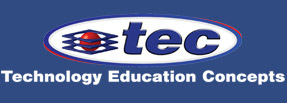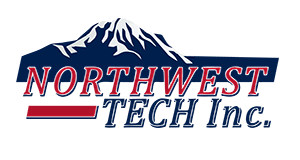| 3D Printing | A specific additive manufacturing technology commonly used to print three dimensional components. 3D Printing is a process by which digital 3D design data is used to build up a component in layers by depositing material. 3D Printers start on the hobbyist level printing plastic items through to industrial versions printing in a variety of materials for rapid prototyping and custom product design. |
| Additive Manufacturing | Additive Manufacturing describes a professional production technique which is clearly distinguished from conventional methods of material removal. Instead of milling a workpiece from solid block, for example, Additive Manufacturing builds up components layer by layer using materials of different forms. A range of different metals, plastics and composite materials may be used. |
| Advanced Manufacturing | Use of innovative technologies to create existing products and the creation of new products. Advanced manufacturing can include production activities that depend on information, automation, computation, software, sensing, and networking. |
| AGV (Automated Guided Vehicle) | A mobile robot guided by markers or wires in a floor, or uses vision, magnets, or lasers for navigation. typically used to move materials around a manufacturing facility or a warehouse. |
| AI (Artificial Intelligence) | An area of computer science that emphasizes the creation of intelligent machines that work and react like humans. AI is the broader concept of machines being able to carry out tasks in a way that we would consider “smart”. |
| AR (Augmented Reality) | A technology that superimposes a computer-generated image on a user’s view of the real world, thus providing a composite view. |
| ASRS or AS/RS (Automated Storage and Retrieval System ) | Computer-controlled systems used for placing and retrieving loads from defined storage locations. |
| Automation | Using control systems to operate an apparatus, process, or system with minimal or reduced direct human intervention. |
| Big Data | Data sets that are so voluminous and complex that traditional data processing application software are inadequate to deal with them. The term is used to refer to the use of predictive analytics, user behaviour analytics, or certain other advanced data analytics methods that extract value from data, and seldom to a particular size of data set. |
| CAD (Computer-Aided Design) | Computer-aided design (CAD) is the use of a wide range of computer-based tools that assist engineers, architects, and other design professionals in their design activities. It is the main geometry authoring tool within the Product Lifecycle Management process and involves both software and sometimes special-purpose hardware. |
| CAM (Computer-Aided Manufacturing) | In general, computer-aided manufacturing (CAM) refers to the use of computer systems to plan, manage, and control the operations of a manufacturing plant through either direct or indirect computer interface with the plant’s production resources. Computer-aided manufacturing (CAM) often refers to software that takes the geometric design authored with CAD software as input and outputs manufacturing instructions that are downloaded to automated equipment such as a computer numerically controlled (CNC) machine tool. Is also referred to as computer-assisted manufacturing. |
| CIM (Computer-Integrated Manufacturing) | An approach to integrate production-related information and control entire production processes, automated lines, plants, and networks by using computers and a common database. |
| Cloud Computing | A secure data center or application managed outside of your physical company and accessible from anywhere on the internet with the resources to scale flexibly. |
| CNC (Computer Numerical Control) | The digital control of a physical machine that consists of a series of integrated actuators, power electronics, sensors, and dedicated computer running under a real-time operating system. Computer numerical control (CNC) can control multiple machines, usually when they are grouped in a manufacturing cell. This is a form of digital automation. |
| Collaborative Robot | A robot designed for direct interaction with a human within a collaborative space |
| Cross-Training | Training employees in several skill sets so they can fill in for one another as needed. |
| Cyber-Physical Production Systems | Machines connected in a process or line where one machine’s actions can influence another |
| Digital twins | Virtual representations of physical objects or systems that are used to understand, predict and optimize performance in order to achieve improved business outcomes. Digital twins consist of three components: a data model, a set of analytics or algorithms, and knowledge. |
| ERP | ERP is an acronym for Enterprise Resource Planning. ERP software integrates the the various processes that are essential to running a business into one complete system to streamline processes and information across the entire organization. ERP systems share a central database that supports multiple functions used by different business units. This means that employees in different divisions can rely on the same information for their specific needs. |
| FMS (Flexible Manufacturing System) | Integrated group of manufacturing equipment and/or cross-trained work teams that can produce a variety of parts in the mid-volume production range. Flexible refers to the systems capability to manufacture different part variants and production quantity can be adjusted in response to changing demand. |
| HMI (Human-Machine Interface) | A user-interface consisting of hardware and software that lets a person send request/commands to a machine. Typically HMI’s are meant to make it as easy as possible for a person to control a machine with little difficulty. |
| IIoT (Industrial Internet of Things) | Sometimes IIoT is used interchangeably with Industry 4.0 or the Fourth Industrial Revolution. IIoT is mainly used in the scope of IoT applications outside of the consumer space and is about applications and use cases across several sectors. IIoT applications can arise in manufacturing, logistics, oil and gas, transportation, energy/utilities, mining and metals, aviation and other industrial sectors and in use cases which are typical to these industries. IIoT is defined as “machines, computers and people enabling intelligent industrial operations using advanced data analytics for transformational business outcomes”. Another definition for IIoT is to describe the industrial transformation in the connected context of machines, cyber- physical systems, advanced analytics, AI, people, cloud, edge computing and so forth. |
| Industry 4.0 | Represents the fourth industrial revolution (originally) in manufacturing and (now) industry. Industry 4.0 is the current industrial transformation with automation, data exchanges, cloud, cyber-physical systems, robots, Big Data, AI, IoT and (semi-) autonomous industrial techniques to realise smart industry and manufacturing goals in the intersection of people, new technologies and innovation. |
| IoT (Internet of Things) | IoT is an endless network of intelligent computers, devices, and objects that collect and share data. The collected data is sent to a central Cloud-based service where it is aggregated with other data and then shared with end users in a helpful way. IoT is also referred as the convergence of IT and Operational Technology (OT). |
| Just-in-Time | Just-in-time (JIT) techniques reduce setup times, inventory, and waste, and improve products and reduce manufacturing cycle time. Synonyms include: continuous-flow production. JIT is a total manufacturing system that was first introduced by Toyota Motor Corporation. |
| Lean Manufacturing | A systematic method for waste minimisation within a manufacturing system without sacrificing productivity. Lean manufacturing aims to reduce wasted time, effort or other resources in the production process. |
| LP-WAN | A low-power wide-area network is a type of wireless telecommunication wide area network designed to allow long-range communications for small amounts of data for a long period of time from devices like sensors operated on a battery. |
| Machine Learning | Sometimes used interchangeable with AI. However, Machine Learning is a current application of AI based around the idea that we should really just be able to give machines access to data and let them learn for themselves. |
| MES (Manufacturing Execution Systems) | Computerized systems used in manufacturing to track and document the transformation of raw materials to finished goods. MES provides information that helps manufacturing decision makers understand how current conditions on the plant floor can be optimized to improve production output. MES works in real time to enable the control of multiple elements of the production process (e.g. inputs, personnel, machines and support services). |
| MQTT | MQTT stands for MQ Telemetry Transport. It is an extremely simple and lightweight messaging protocol, designed for constrained devices and low-bandwidth, high-latency or unreliable networks. The design principles are to minimise network bandwidth and device resource requirements whilst also attempting to ensure reliability and some degree of assurance of delivery. |
| OPC UA | OPC UA, or OPC Unified Architecture, developed by the OPC Foundation, refers to machine-to-machine, the standards set for automation and communication between machines. |
| Predictive Analytics | The modelling of data to identify patterns that help businesses predict behaviors and events, from inventory depletions to machinery breakdowns, to consumer trends |
| Predictive Maintenance | Connected machines in the Digital Manufacturing environment providing real-time status information, Machine Learning can be applied to the data to spot trends and patterns in timing specifically for maintenance requirements. This results in the avoidance of unscheduled downtime and maximizes overall machine availability. |
| Rapid Prototyping | Techniques to quickly fabricate a scale model of a physical part or assembly |
| RFID | RFID is radio-frequency identification and refers to a technology whereby digital data encoded in RFID tags or smart labels are captured by a reader via radio waves. RFID is similar to barcoding in that data from a tag or label are captured by a device that stores the data in a database. |
| SCADA | SCADA, or supervisory control and data acquisition, refers to a control system in which peripheral devices are used to interface, in addition to computers and other networks. |
| Smart Factory | The seamless connection of individual production steps, from planning stages to actuators in the field. In the near future, machinery and equipment will be able to improve processes through self-optimization; systems will autonomously adapt to the traffic profile and network environment. |
| Smart Manufacturing | Aims to reduce manufacturing costs from the perspective of real-time energy management, energy productivity, and process energy efficiency. Initiatives will create a networked data driven process platform that combines innovative modeling and simulation and advanced sensing and control. Integrates efficiency intelligence in real-time across an entire production operation with primary emphasis on minimizing energy and material use; particularly relevant for energy-intensive manufacturing sectors. |
| WSN | Wireless Sensor Networks (WSNs) is defined as a self-configured and infrastructure-less wireless networks to monitor physical or environmental conditions, such as temperature, sound, vibration, pressure, motion or pollutants and to cooperatively pass their data through the network to a central location where the data can be observed and analysed |





















